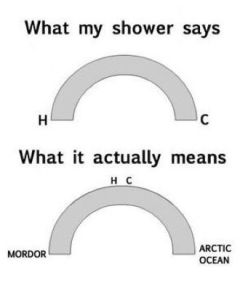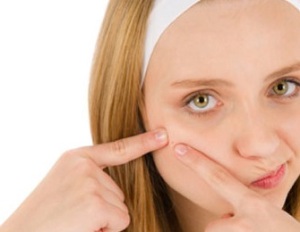
Face Map from Dermalogica
Your skin is a giant tattletale. It is. Every time you look in the mirror it’s talking to you, trying to let you know what’s going on inside. But, it can’t keep a secret to save its life. Your skin tells the story of your sleeping and eating habits, internal processes, and can be the first sign to figuring out certain health issues or imbalances. If you seem to constantly break out or have other skin issues in the same areas, your skin is probably trying to tell you something!
Fortunately, these signals are easy for you to interpret. The formal name for this interpretation is Face Mapping. Dealing with break-outs and blotchiness aren’t very fun, but it’s important for you to have a road map to your own face. That way, you will be able to decode some persistent problem areas and understand the underlying causes that might be affecting your overall health, as well as your skin health.
Forehead (zone 1, 3)*- Consistent breakouts here are usually related to bladder and digestive functions. If you are constantly breaking out in this area it can be a sign that you need to take a break from junk foods, alcohol, and caffeine. Try to drink more water and focus on wholesome foods, preferably ones that fall in the cold or cool realms. Stress can also disrupt the flow of your body and digestion and cause breakouts here. So, make sure you get plenty of rest and let go of worrying about things you can’t control.

Middle of the Forehead and between eyebrows (zone 2) *– Breakouts here are often related to the liver. Most of us are aware that the liver is responsible for filtering toxins from our bodies, such as alcohol and drugs, but the liver also produces bile to digest fats and proteins. Try to reduce your consumption of alcohol, drugs (including over the counter ones), and heavy fatty foods. Since it’s cold and flu season, you may also experience breakouts in this area if you’ve had a cold or flu recently and have been living on medicine to help you through. Your liver has to flush those out of your system…but the breakout should go away not long after your cold/flu.
*Your gallbladder can also cause issues in zones 1, 2, and 3. The gallbladder is where your body stores the bile your liver produces. Reducing fatty processed foods from your diet should help.
Ears (zone 4, 10) – If your ears are red or hot it can indicate stress on the adrenal gland or kidneys. Calm down and drink some cool water to help those kidneys filter! Stay away from sodas and energy drinks—they dehydrate you and the caffeine in them are stressors on your endocrine system.
Cheeks (zone 5, 9) – Breakouts here can indicate issues with the respiratory system. If you are a smoker, or have allergies, breakouts here can be very common. Food allergies can also show up here first. If you don’t smoke and don’t believe you have any allergies but seem to have redness, it can be a sign of rosacea or a diet too full of warm foods. Breakouts on the lower cheeks can also indicate dental or gum infections like gingivitis.
Eyes (zone 6, 8) – Puffiness and dark circles often indicates poor kidney function. Much like zone 4, the key here is to drink water and avoid dehydrating beverages like alcohol and soda. It may seem obvious but make sure you’ve been getting good sleep as well! Yes, darkness and puffiness can be hereditary but if you get solid sleep and stay hydrated you can minimize the effects of those pesky genes.
Nose (zone 7) – Issues with your heart or circulation can show up here. Redness can indicate high blood pressure or the beginnings of rosacea, as well. If you have constant redness in a butterfly shape on your nose and cheeks, that possibly spreads to other parts of the face, it is a good idea to check for lupus as well.
Sides of the chin and jawline (zone 11, 13)** – Breakouts here are often related to changes in stress and hormone levels. They can often follow the pattern of the female ovulation cycle or show up during times of high stress. Pregnancy, using hormonal birth control, or even eating foods treated with hormones can also lead to breakouts in this area. If you are a female who experiences acne in this area and also heavier hair growth around the chin, it’s a good idea to get tested for Polycystic Ovarian Syndrome (PCOS). If you have had recent dental work, you may also experience breakouts around the jaw line.
Chin (zone 12)** – Stomach and hormonal imbalances are often the culprit behind congestion and breakouts in this area. Everything from zones 11 and 13 still applies here, but if you have a poor quality diet, you may have extra congestion on the chin. Focus on reducing the amount of CRAP (Caffeine, Refined foods, Alcohol and Artificial sweeteners, and Processed foods)
**Another issue I often see around Valentines Day and the entire month of November (Movember) is unexplainable redness, irritation, and breakouts around the chin and mouth. Just tell your man to shave for goodness sakes. 😉
Neck (zone 14) – breakouts or uneven skin tone on the neck can indicate your body is fighting off a bacterial or viral infection or that you’re putting stress on your adrenal gland. Get some rest, eat well, read a good book, and relax. Namaste.
As you can see, your facial skin can be an indicator for a lot of internal turmoil. In fact, it’s literally staring at you in the mirror. If you do suspect an underlying hormonal imbalance or other medical condition, please get to the doctor and have your levels checked. When it comes to thyroid, adrenal, the rest of your endocrine system and the health of your whole body, it is better to be safe than sorry—a lot of issues can be mitigated if you start treating them sooner rather than later.
Listen to your skin. It really does have your best interests in mind!
As always, keep sending me your beauty-based questions to megjacobsblog@gmail.com or facebook.com/megjacobsbeauty
See you next Sunday!
Disclaimer: I am not a doctor and when looking into the idea of face mapping keep an open mind. Just because you have breakouts in a certain area does not mean you absolutely have a medical condition that needs treatment. Always seek medical help if you suspect a problem. These are simply guidelines to help you on your path to skin you love.






